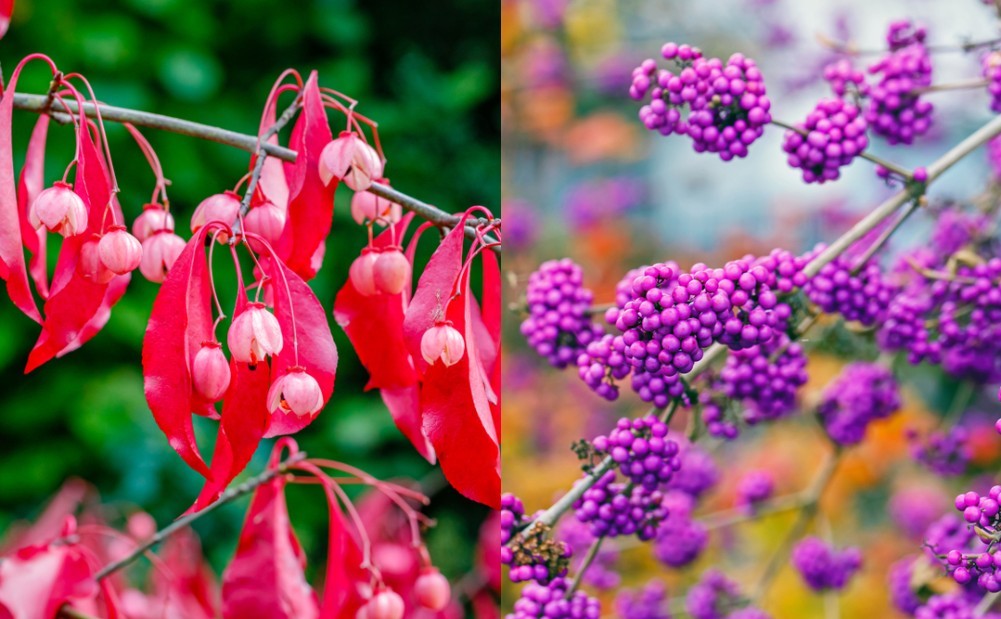
As summer draws to a close and the spectacular blooms and colors of the vernal garden begin to fade, there are still plenty of opportunities to capture the unique beauty of the changing of the seasons.
In spring and summer, deciduous plants are rife with chlorophyll, which gives foliage its green color. As days grow shorter, less chlorophyll is produced to expose hidden hues that were present all the while, we just couldn’t see them.
These pigments include carotenoids (yellows and oranges) and anthocyanins (reds, blues, and purples) that reveal themselves when given less light and cooler temperatures.
The best gardens are those that have interesting colors, textures, and shapes no matter the time of year. And the fall garden can be a truly impressive showing of transition.
Here are some of the best foliage plants that explode with color, putting out a dazzling display from late summer and into early winter:
1. Sugar Maple
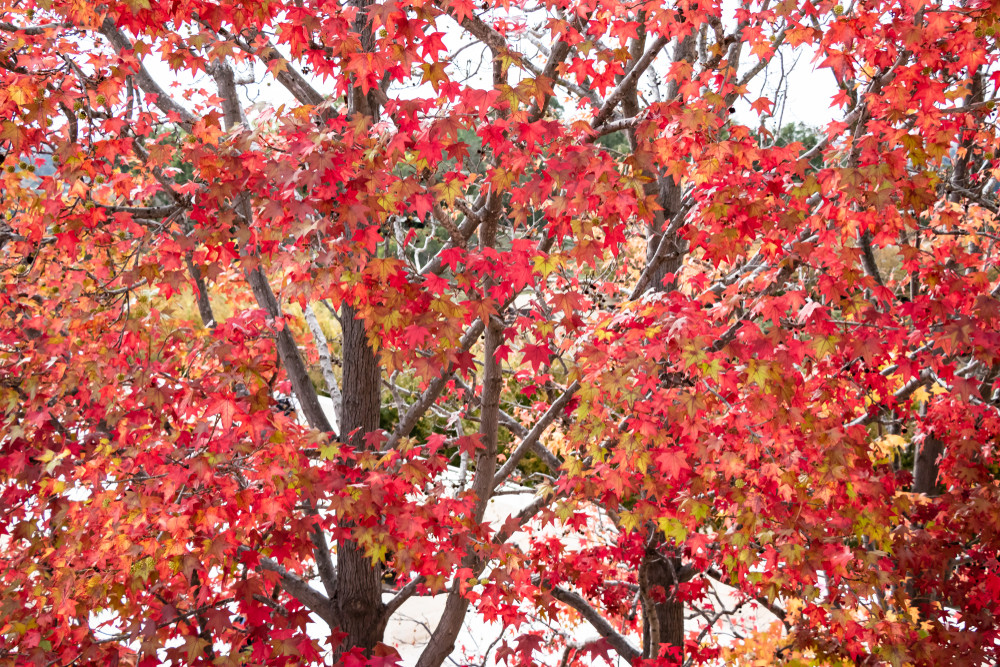
Sugar maple (Acer saccharum) is a shade tree renowned for its spectacular foliage colors.
Starting out as emerald green in spring and summer, sugar maple leaves slowly transition to lime green, bright yellow, vibrant orange, and fire engine red, finishing its cycle in a deep burgundy.
In addition to its beauty, sugar maple is an excellent source of maple syrup.
When the diameter of the tree trunk is larger than 10 inches, it can be tapped for your own source of the sweet stuff.
Native to central and eastern parts of North America, sugar maple is hardy in USDA zones 3 to 8.
Although sugar maple prefers full sun, it can adapt to partial shade. In the forests, sugar maple can reach heights of up to 120 feet, but in residential settings it will usually only grow to 70 feet over its 200 year lifespan.
2. Quaking Aspen
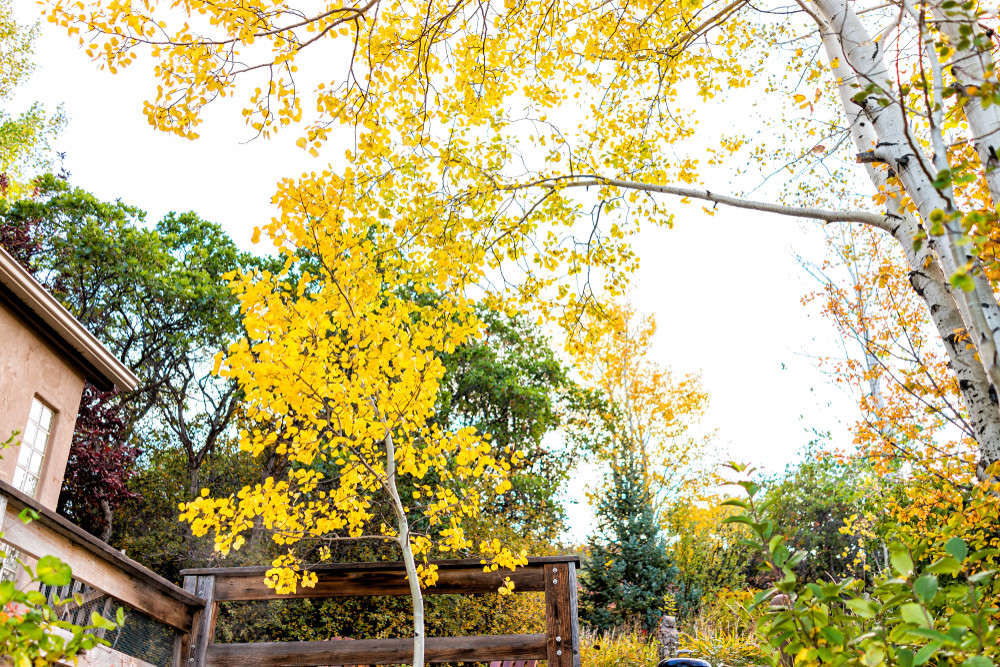
A tall and slender tree, quaking aspen (Populus tremuloides) is so named due its habit of shivering and trembling in the breeze.
Growing up to 80 feet at maturity, quaking aspen is notable for its smooth silvery trunk topped with a canopy of rounded, slightly serrate leaves that start out lime green and transition to golden yellow in autumn.
Hardy in zones 1 through 7, quaking aspen’s native range spans Alaska all the way down to the mountains of Central Mexico.
It’s a fast grower too, increasing its height by 24 inches each year. Plant quaking aspen in full or part sun in a spot with acidic, loamy soil.
3. Staghorn Sumac
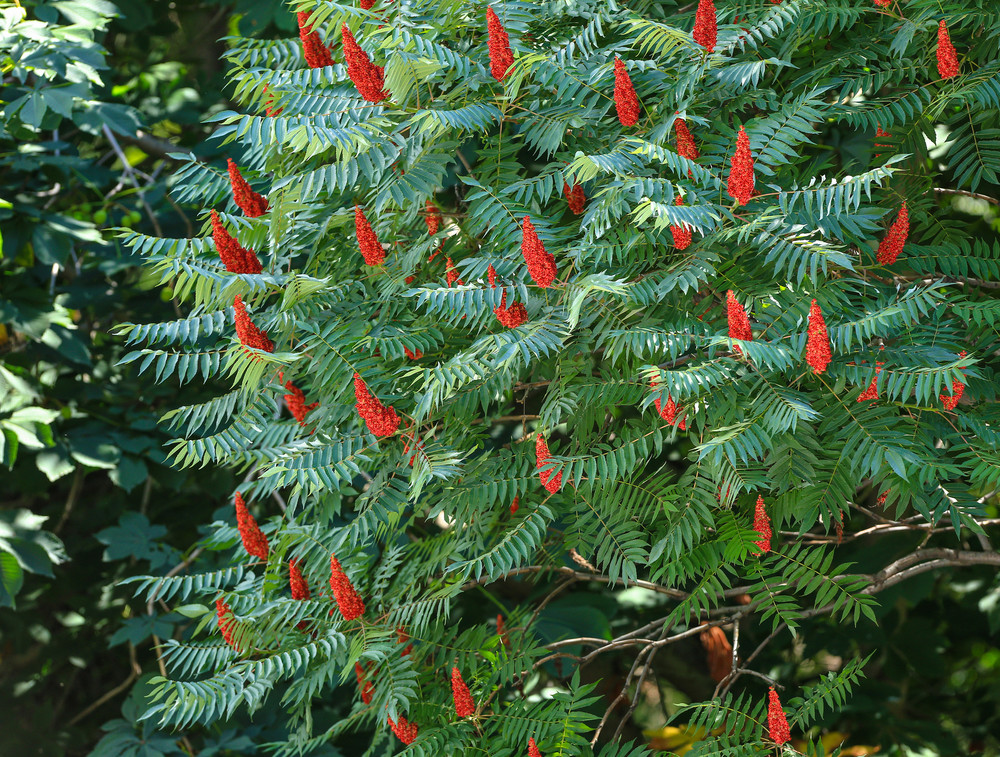
Sumac (Rhus spp.) is a type of small tree or shrub found in temperate regions across the globe.
In North America, there are several species of native sumac that provide seasonal interest throughout the year.
Notable for its bright, eye-catching foliage in autumn, sumac also produce large floral spikes in spring that mature into colorful clusters of drupes that persist into winter.
These berry like fruits provide a good source of food for local wildlife too.
Staghorn sumac (R. typhina) has a fern-like appearance, with feathery leaves that are pinnately arranged along the stem.
Named for its forking branches that have a velvety texture, similar to antlers, staghorn sumac’s foliage turns eye catching colors in fall, ranging from bright red to orange to burgundy.
Staghorn sumac is hardy in zones 4 to 8.
Other good fall foliage varieties of sumac include fragrant sumac (R. aromatica), smooth sumac (R. glabra), prairie sumac (R. lanceolata), and shining sumac (R. copallinum).
4. Burning Bush
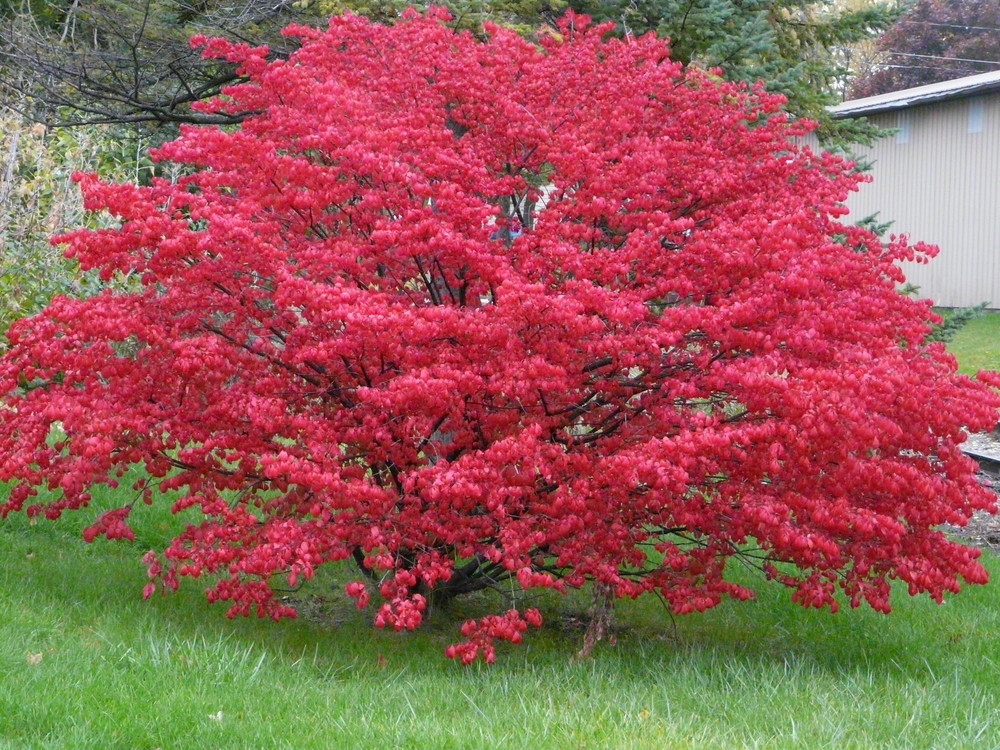
When you need a shock of red in your autumn landscape, burning bush (Euonymus atropurpureus) will certainly fit the bill.
Also known as eastern wahoo, burning bush is part of the bittersweet family and is indigenous to the Midwest, found as far south as Florida and Texas.
An upright shrub that can reach a height of 20 feet and 25 feet wide, it produces a clump of branches at its base that extend outwards to form an irregular crown of elliptical leaves.
Green in spring and summer, burning bush turns a dramatic scarlet red in fall with dangling fruit clusters – poisonous to us but much beloved by wild birds.
Requiring full sun to part shade, burning bush is hardy in zones 3 through 7.
5. American Smoke Tree
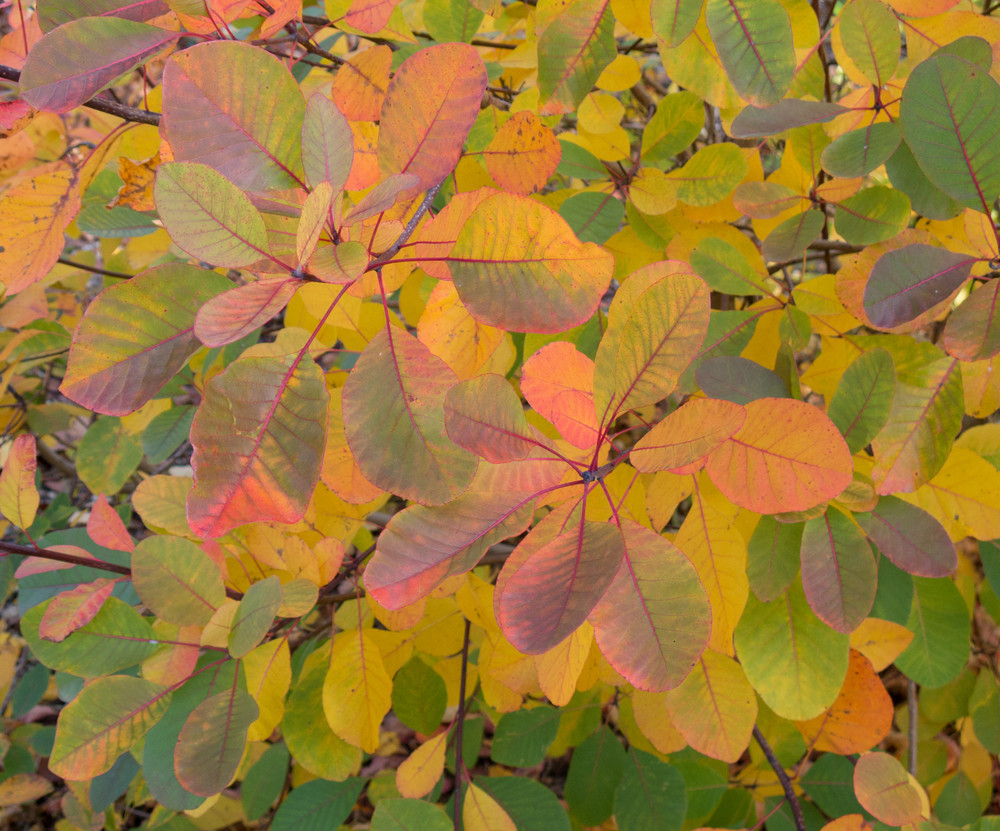
American smoke tree (Cotinus obovatus) is so named for its floral clusters that, when spent in midsummer, turn into fluffy, billowy hairs that appear as puffs of pinkish smoke over its crown.
Often considered to be one of the best native trees for brilliant fall color, American smoke tree transitions from blue-green leaves to an array of autumnal hues, including yellow, red, orange, and purple.
Reaching a size of 20 to 30 feet tall and wide, American smoke tree requires full sun and medium moisture.
It adapts well to many soil types but prefers well-draining, somewhat infertile loamy soil.
Though American smoke tree’s native range is the southern United States, it is hardy in cooler climes from zones 4 to 8.
6. Virginia Creeper
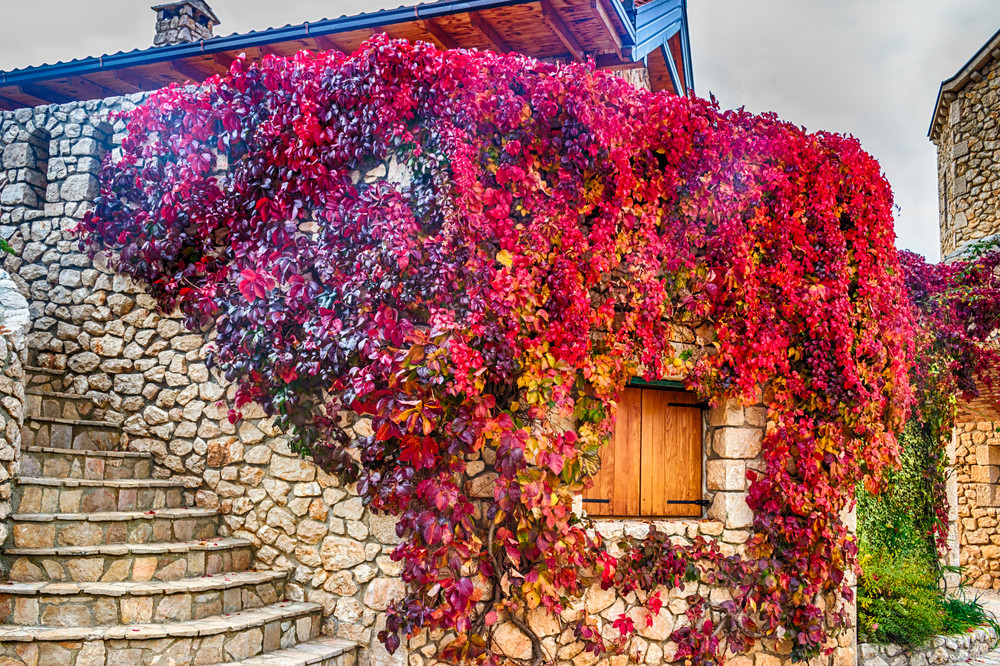
When you love the look of an ivy-covered façade, Virginia creeper (Parthenocissus quinquefolia) is an excellent choice.
Virginia creeper is a fast and vigorous woody vine, with palmately compound leaves composed of 5 serrate leaflets, each about six inches long.
In spring leaves are lime colored and slowly transition to hunter green in summer, finishing in autumn with dazzling shades of scarlet and magenta.
It also bears tiny blue-black berries, another valuable food source for birds over winter.
Although Virginia creeper is really easy going – it will grow in practically any sunlight condition and soil type – it should be planted in a spot where it has room to grow.
Virginia creeper helps keeps buildings cooler in summer by providing a bit of shade to the wall surface.
It attaches to brickwork and other vertical surfaces with little sucker disks, so it won’t harm your masonry like other vines that cling with penetrating roots.
Still, you’ll want to trim it back each year and keep it far away from wiring, shutters, and gutters.
This clinger is native to central and eastern North America, and is hardy in zones 3 to 9.
7. American Beautyberry
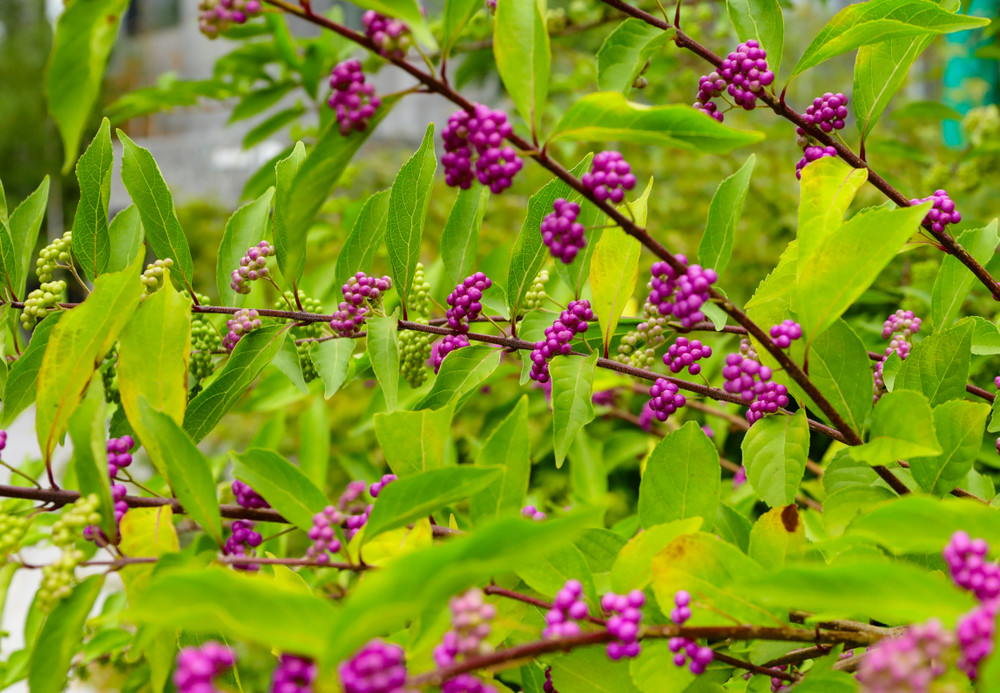
While the fall garden should celebrate the amazing show of colors of the season, be sure to leave room in your garden beds for interesting shapes and textures.
The American beautyberry is one example where its foliage is fairly ordinary, but is cherished for its large clusters of violet drupes that persist through winter.
The berries are edible, but are quite astringent and should only be consumed in small amounts. They can be used to make jellies and wines, or leave them on the branch for foraging animals.
Providing a lovely contrast for your foliage plants, beautyberry grows as a loose shrub, only 3 to 6 feet as tall and wide.
It bears its fruit most profusely in full sun and when several are planted together.
American beautyberry is hardy in zones 6 to 10.
8. Blue Star Amsonia
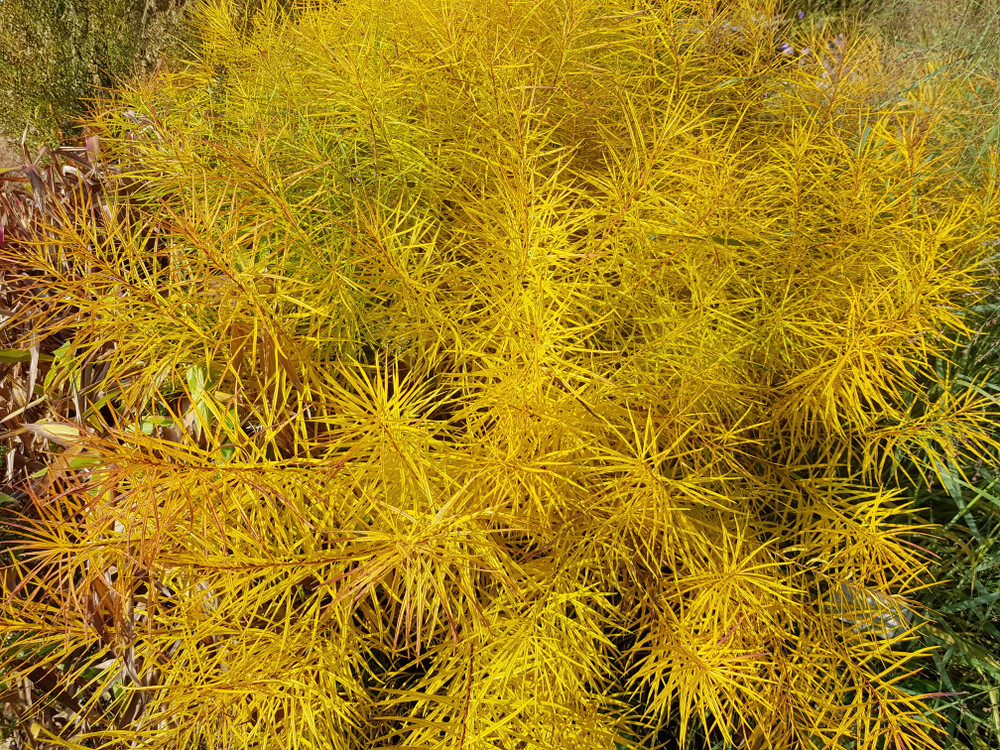
Found growing in the wilds of the Ouachita Mountains in Arkansas, blue star amsonia (Amsonia hubrichtii) is an upright, mounding plant that produces clusters of ghostly blue star-shaped flowers in spring.
Its airy and soft needle-like foliage is bright green throughout the summer, but turns a flashy golden yellow to burnt orange in autumn.
The feathery and bushy growth habit, reaching 3 feet high, makes a wonderful contrast when planted along walkways or as a backdrop for fall bloomers like autumn crocus and mums.
Blue star amsonia has a very easygoing nature, simply plant it in full sun in zones 5 to 8.
9. Switch Grass
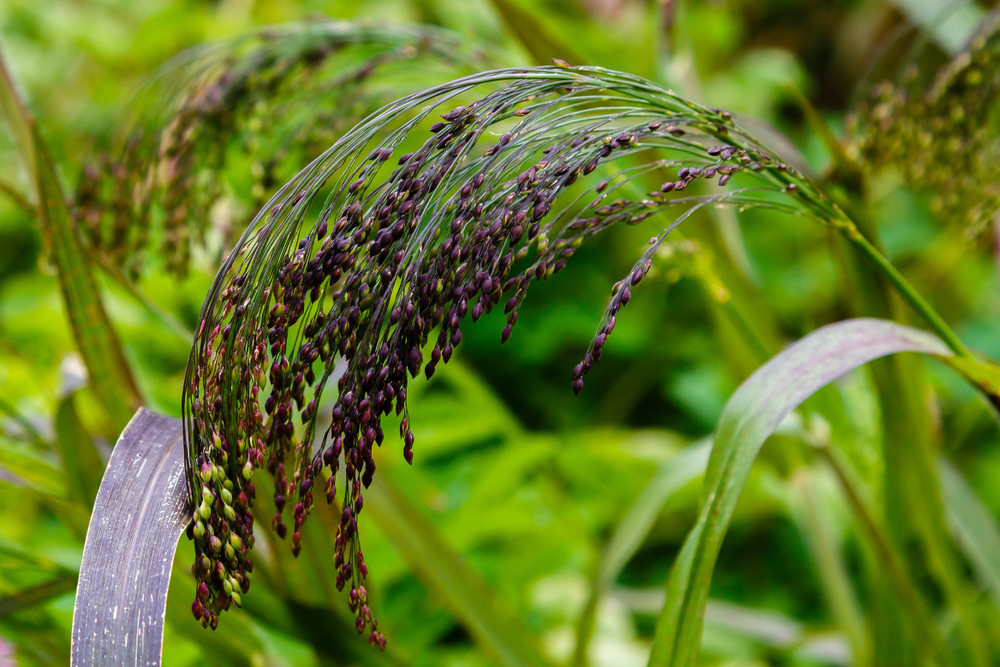
Switch grass (Panicum virgatum ‘Shenandoah’) is a perennial, warm season grass found in much of North America east of the Rocky Mountains.
An important plant in the tallgrass prairie ecosystem, switch grass is also quite ornamental, adding both texture and color to the garden.
Growing in 3 foot high clumps, its stiff leaves stay upright throughout the season.
The foliage begins as bluish green with red highlights in summer, turning shades of purple, burgundy, and wine in fall. When in bloom, it bears reddish pink floral panicles that appear to hover over the leaves like a cloud.
Cultivate switch grass in full sun to part shade, in zones 5 to 9.
10. Virginia Sweetspire
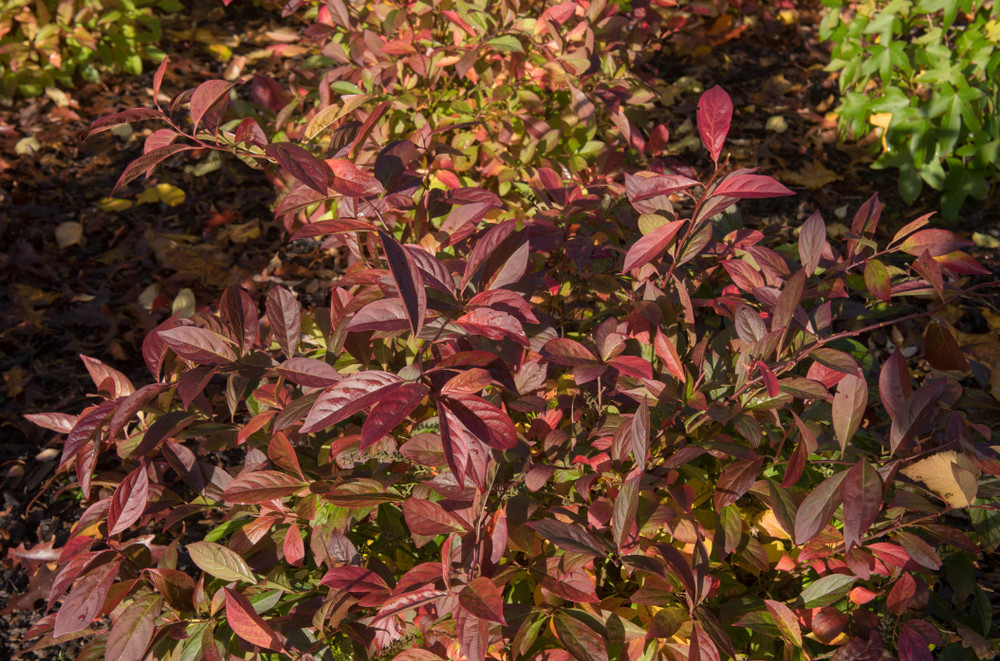
Virginia sweetspire (Itea virginica ‘Henry’s Garnet’) is a flowering shrub native to the southern United States.
Its rounded growth habit, more broad than tall, is composed of numerous arching stems dappled with simple oval leaves.
In May, it explodes in blooms – fragrant, small white flowers in drooping racemes cover the entire plant.
Come autumn, Virginia sweetspire slowly transitions from green to gold, orange, and finally, a rich crimson red. The specific cultivar, ‘Henry’s Garnet’ has the best fall color of the sweetspires.
Grown in zones 5 to 9, Virginia sweetspire prefers full sun but is adaptable to shade.
Plant it in a spot that has good drainage but is naturally wet, near streams or low lying areas.
